Basmati rice and caramelized cumin are perfect for each other. The earthy, punchy depth of the cumin only accentuates the sweet and fragrant mellow canvas that is basmati rice.
And then it gets better. This cumin rice recipe features the rich, nutty taste of ghee, with mellow, warming, woodsy flavors from cinnamon sticks, whole clove, and bay leaf.
Jump to Recipe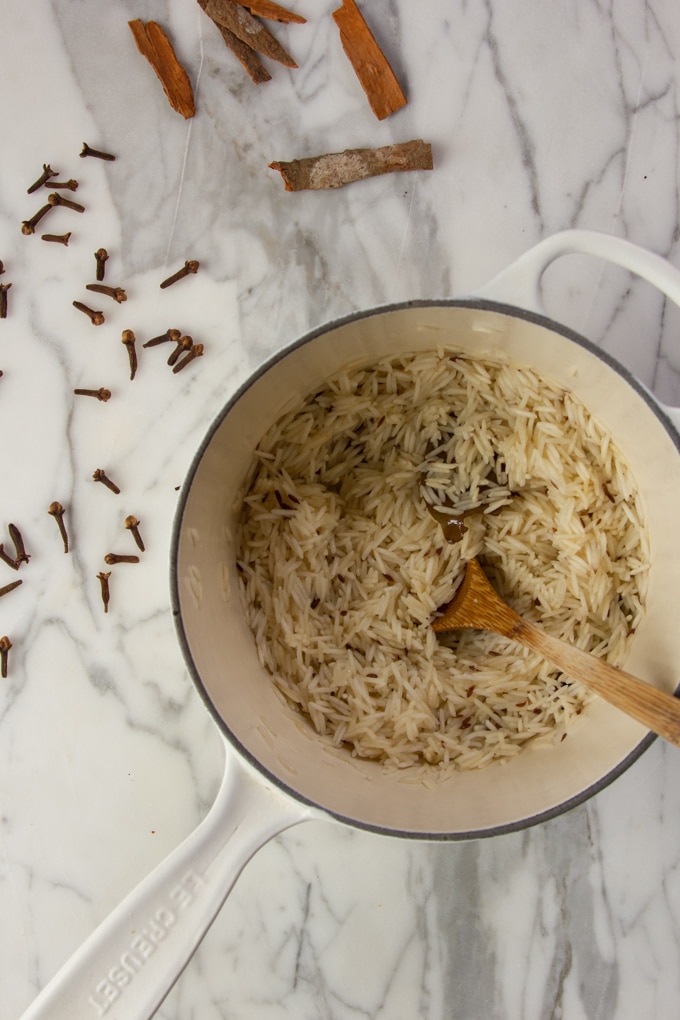
To top it all off, just the right amount of Himalayan pink salt elevates the dish and brings the flavors together.
From one perspective, it is only cumin rice; but from another, it tastes like something you’d eat at a fine dining restaurant.
Jump to:
If you aren’t familiar with the idea of a savory, spiced rice dish, I’d love to tell you a bit more about why it's so good.
Many South Asian cultures enjoy flavored rice (fried rice anyone?), but India's repertoire is particularly developed.
In addition to cumin rice (also known as jeera rice), you can enjoy lemon rice, ghee rice, turmeric rice, cardamom rice, dal rice, tomato rice, pulao, biryani, and so many others.
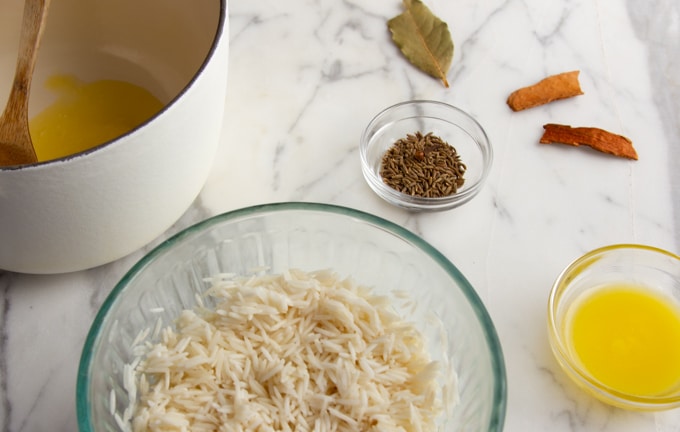
RECOMMENDED FOR YOU:
How To Cook Perfect Basmati Rice —GET RECIPE
Lemon Rice With Turmeric And Cashews
—READ MORE
Perfect with Indian dishes
For those of us who live outside India, Basmati rice and Indian food always go together. We admire basmati’s impossibly long grains and are uplifted by its intoxicating scent.
Indeed, Basmati is one of India's great treasures. It's grown in the foothills of the sacred Himalayas, and shared with the world.
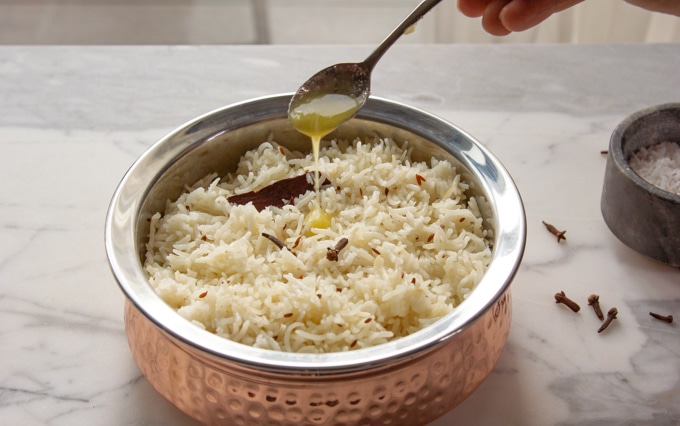
In Hindi, basmati means “fragrance-filled.” In the spirit of "like enhancing like," this special rice variety pairs really well with other savory spices, such as saffron, cardamom, cinnamon, bay leaf, cumin, and many more.
Since we all know that Indian food is scented with spices, basmati rice is always an excellent complement, as well as a special treat.
When we desire Indian food, it is often warmth and nourishment we crave. Basmati delivers every time, with a nutty, satisfying bite that feels like comfort food.
Where to buy
We are very fortunate as non-Indians to have easy access to beautiful, export-quality basmati rice.
In my opinion, the best basmati rice is grown in the Himalayan foothills around Dehradun, India. If you are fortunate enough to find this rice, do buy it.
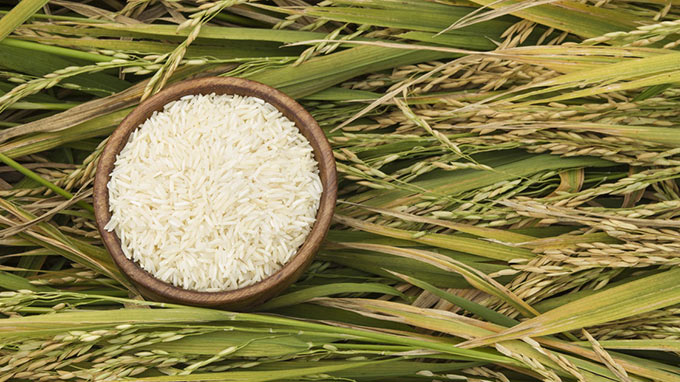
When you visit an Indian grocery store to buy basmati rice, there could be dozens of varieties to choose from.
Almost all Basmati rice you'll see will be grown in in India and Pakistan. I prefer the Indian rice.
I also prefer aged basmati rice. One to two years of aging intensifies the taste and aroma basmati.
So if you can see the individual grains of rice before buying, look for grains that are long, fat, unbroken, and yellowish (an indication of aging).
SWAD is my favorite brand, and it is the prized Dehraduni basmati rice that I talked about above. Ten pounds should last you a few months, and it will not go bad for years.
Basmati rice in India
About half of India’s population enjoys rice daily, and India is the second-largest producer of rice in the world, accounting for 20 percent of global production.
Imagine what kind of diversity there is when millions upon millions of Indian farmers grow, and trade their own rice.
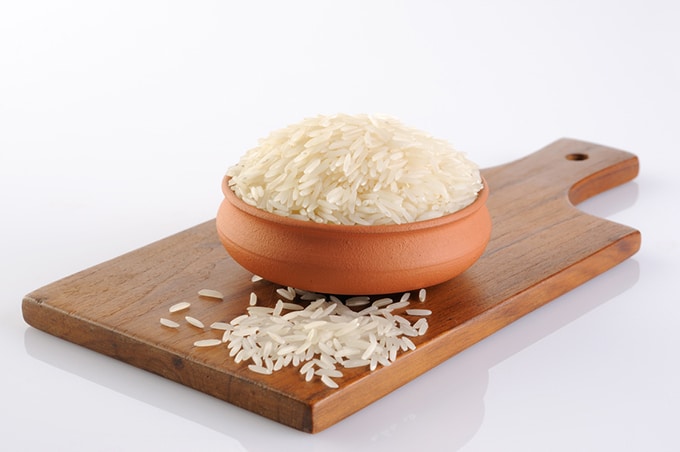
Basmati is just one of 6,000 varieties of rice grown in India. Such rice comes in different lengths and thicknesses, as well as colors.
Many Indians feel that basmati is too distinguished (and too expensive) to eat every day, so they save it for special occasions, and for special dishes.
Also, basmati only grows in the north.
So naturally, people who live in the north—such as in the state of Punjab and New Delhi—eat more basmati.
Biryani, a famous North Indian slow cooked rice dish layered with meat and spices, such as saffron, cilantro, and mint, is almost always made with basmati rice.
Rice traces back an estimated 6,500 years in India. In that time, a rich culture of dishes, festivals, and religious occasions came to be associated with particular rice varieties.
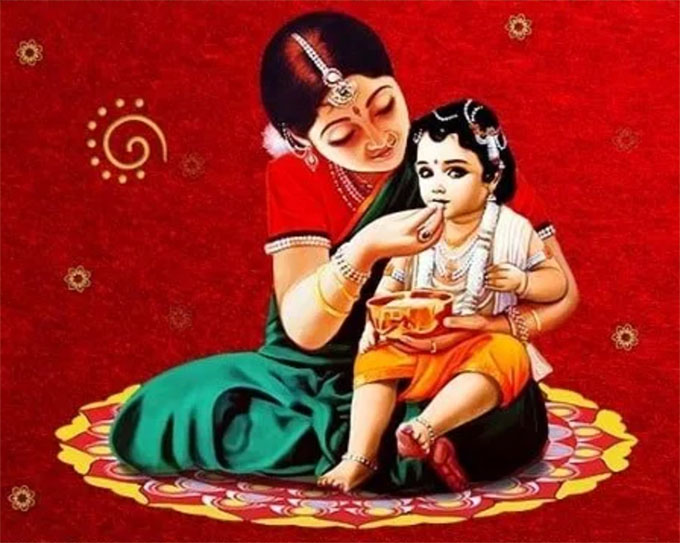
In the image above, an Indian woman feeds her baby his first solid food, a Hindu ritual known as Annaprashan.
What does she feed him? You guessed it! Rice.
How to make
Since cumin rice is a relatively simple dish, the steps matter.
The first point is to make sure you leave time to soak the rice for at least 15 minutes before you start cooking.
This will help the rice grains fluff up maximally and stay separate and gorgeous.
The next key is to use ghee.
Ghee is a special type of clarified butter that originated in ancient India as a way to preserve milk. One of ghee’s unique properties is that it can be kept at room temperature for months, or even years.
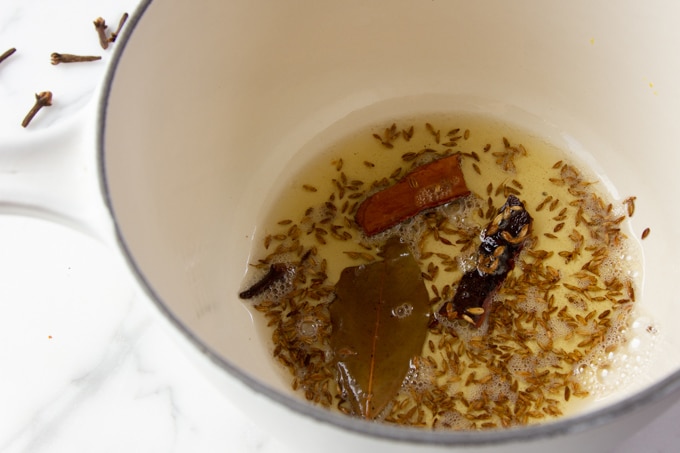
Ghee is made by simmering butter over low heat to coax out the milk solids (proteins) and moisture from the butter.
After the milk solids caramelize on the bottom of the pot—giving ghee its characteristic nutty flavor—the butterfat is strained, and this is the pure ghee.
You can imagine how good this tastes in a cumin rice when you bloom whole cinnamon sticks, cloves, bay leaves, and cumin in it before adding the soaked rice, water, and salt.
To finish the rice, cover it and simmer gently for 12-15 minutes.
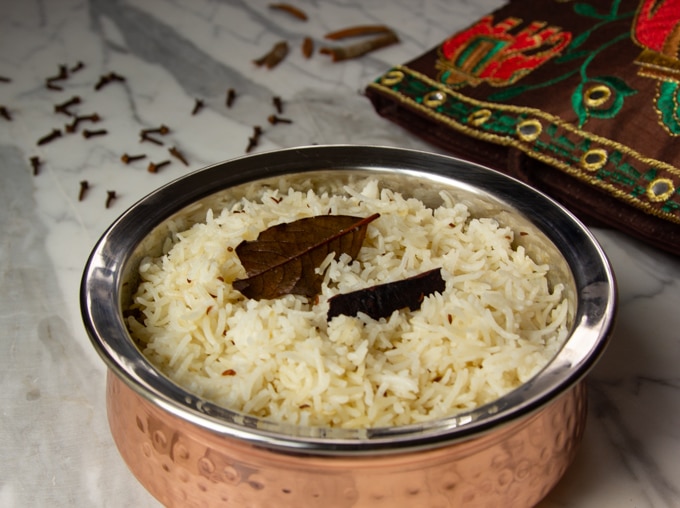
How to enjoy
This will give you beautiful restaurant-quality cumin rice that you can enjoy with an Indian dal and a vegetable side for a complete dinner.
Cumin rice would also be a flavorful choice as the base for a rice bowl. You could enjoy it with roasted vegetables, braised greens, toasted seeds, or your favorite topping.
Some of you may be wondering: what if I don’t have ghee. Well, you can just use butter. And if you are following a dairy-free diet, use coconut oil.
This is basically all there is to cumin rice.
The subtle spices in this dish are sure to brighten up your day. Enjoy!
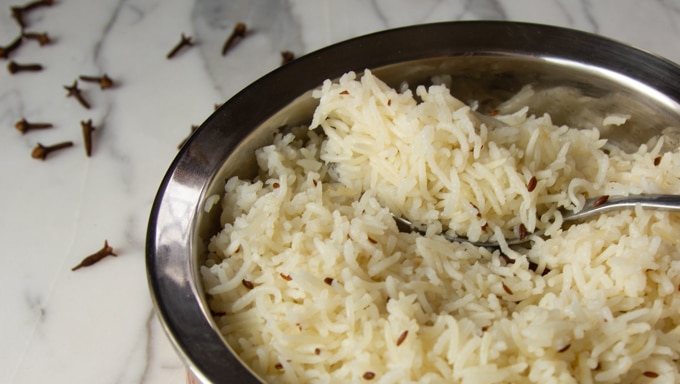
Cumin rice with ...
Healthy Paneer Tikka Masala With Cashew Cream
Black-Eyed Peas Curry With Yogurt Gravy
Comforting Yellow Lentils (Dal Tadka)
Savory Chickpeas In Tangy Tomato Glaze (Chana Masala)
Whole Mung Dal With Cumin, Turmeric & Ghee
Indian Okra Sauté With Red Onion
Indian-Style Stewed Greens (Sarson ka Saag)
How To Prepare Any Vegetable, South-Indian Style
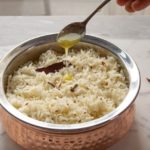
Basmati Cumin Rice (Jeera Rice) Recipe
Helpful Kitchen Tools:
Ingredients
to soak
- 1 cup basmati rice
for the spices
- 1 tablespoon ghee
- 2 inch cinnamon stick
- 1 bay leaf
- 1 whole clove
- 1 teaspoon cumin seeds
to add
- 2 cups water
- ½ teaspoon Himalayan pink salt
Instructions
- Rinse basmati rice once, then soak in cold water for 15 minutes. Drain, and set aside until needed.
- Heat ghee in a saucepan on medium heat. Add cinnamon stick, bay leaf, and clove, and sauté for about 30 seconds, until aromatic. Add cumin seeds, and sauté until the cumin seeds turn a few shades darker.
- Add the soaked and drained rice and stir well to combine. Add water and salt, and bring to a boil.
- Lower the heat and simmer, covered, until the rice is soft. Start with 12 minutes, then check it. Depending on the rice variety, it could take longer.
- Just before serving, gently fluff the rice with a fork to separate the long grains.
Notes
MAKE THIS VEGAN
Substitute ghee with coconut oil or a quality vegetable oil.Nutrition
If you liked this post, please share it with your friends on social media, or leave a comment below.
For more Buttered Veg lifestyle content, follow me on Pinterest, Facebook, Instagram, and YouTube.
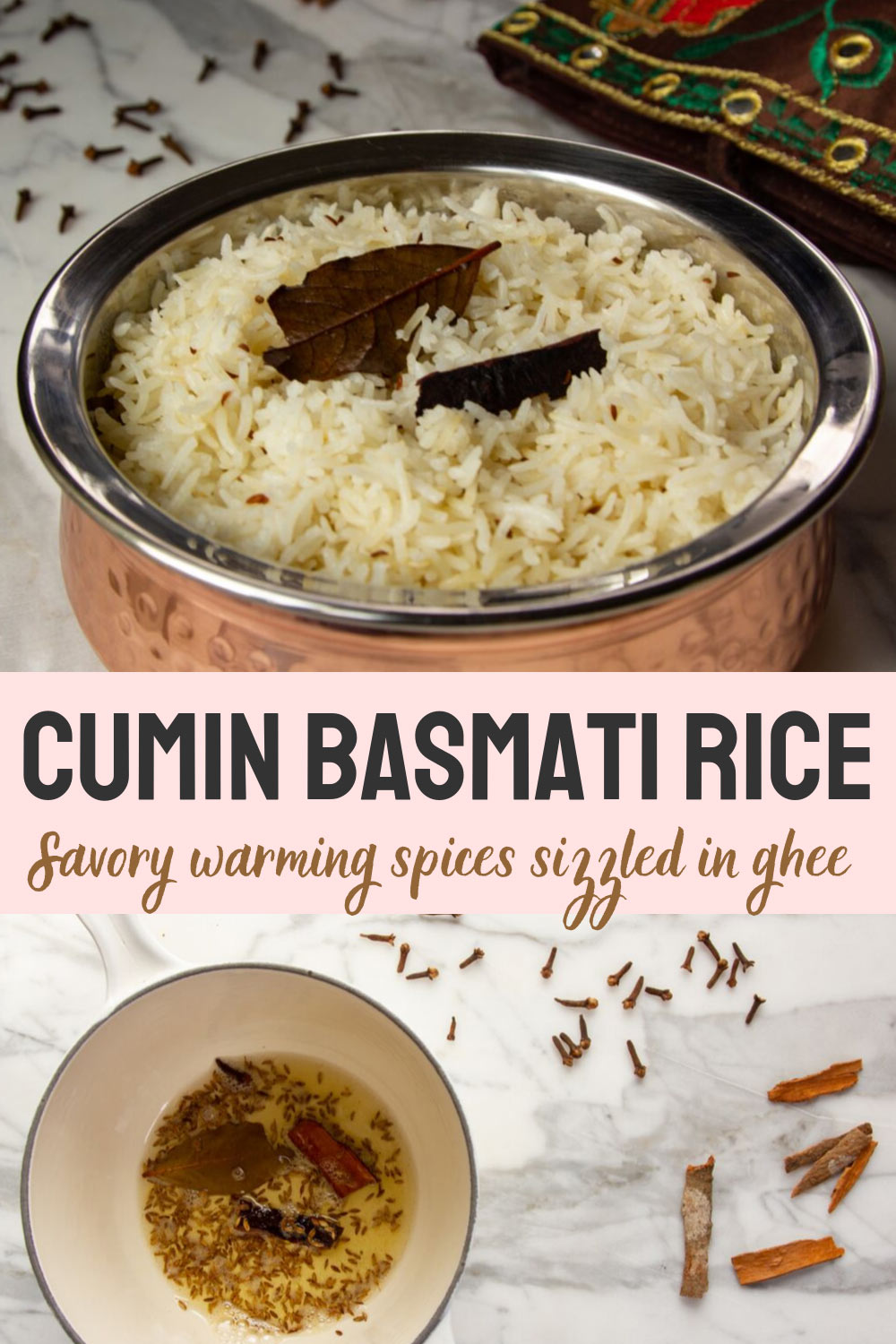

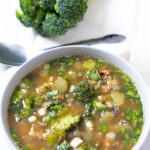
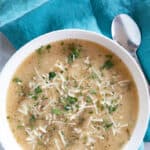
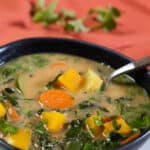
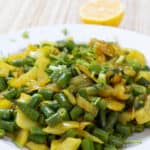


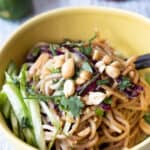

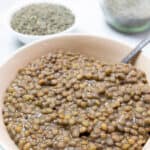
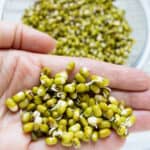
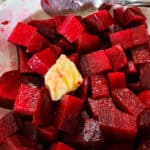

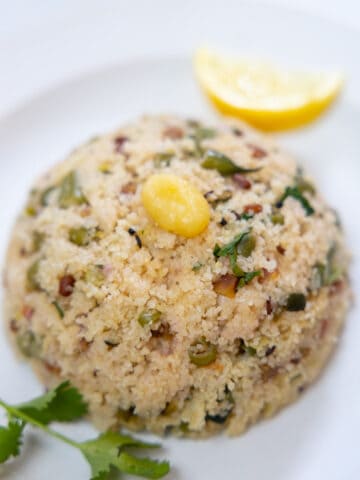
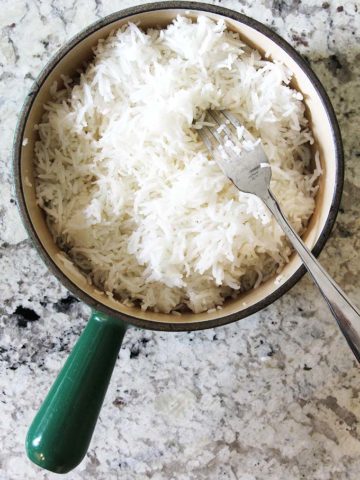
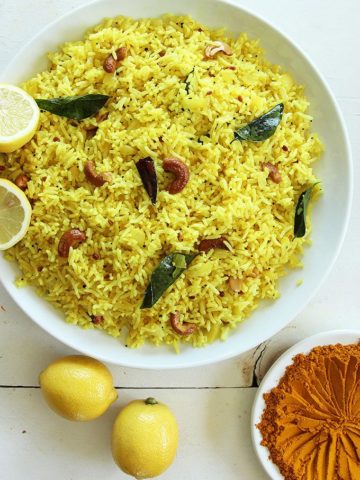
Leave a Reply